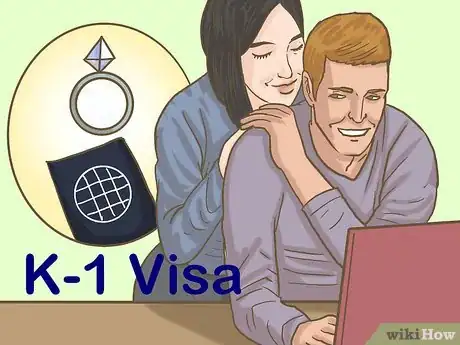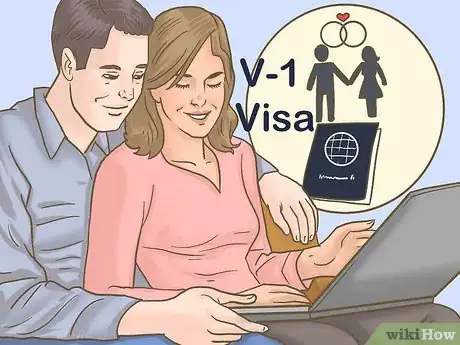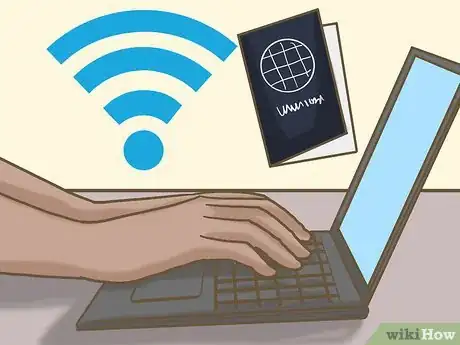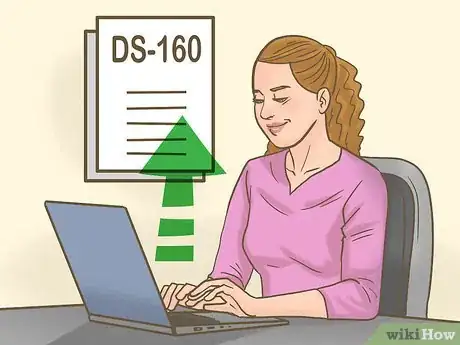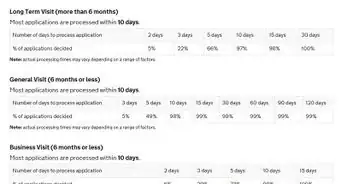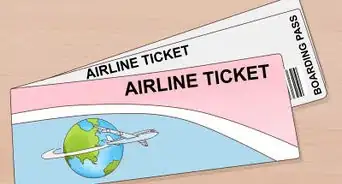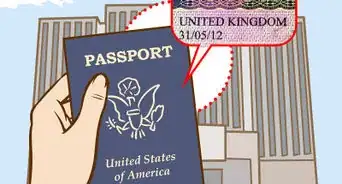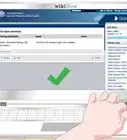This article was co-authored by wikiHow Staff. Our trained team of editors and researchers validate articles for accuracy and comprehensiveness. wikiHow's Content Management Team carefully monitors the work from our editorial staff to ensure that each article is backed by trusted research and meets our high quality standards.
There are 7 references cited in this article, which can be found at the bottom of the page.
This article has been viewed 19,666 times.
Learn more...
Most Canadian citizens do not need a visa to travel to the United States. However, there are a few specific instances in which Canadians will need to obtain a visa before entering the U.S. If you fall into any of these narrow categories, you’ll need to apply for—and obtain—a U.S. visa. All visa applications must be made online. You can apply for a visa online through the U.S. State Department website. Prior to receiving your American visa, you’ll need to appear for an in-person interview at the U.S. embassy in Ottawa, or at any of 6 consulates in Canada.
Steps
Determining Which Visa You Need
-
1Apply for a non-immigrant visa if you are traveling into the U.S. for work. If you’re not planning to move to the U.S., but work across the American border, you’ll need to apply for a non-immigrant visa. Other conditions under which you’d need to apply for a non-immigrant visa include:[1]
- Apply for an A visa if you’re a Canadian government official entering the U.S. for a work assignment.
- Apply for a G visa if you’re an employee of an international organization entering the U.S. for a work assignment.
- Apply for a non-immigrant visa if you’re a NATO employee being assigned to work in the U.S.
-
2Select an E visa if you’re a treaty trader or investor. If you’re a business investor or making a trade with an American business in the field of either commerce or navigation, you’ll need to hold an E visa. This visa allows you to represent Canada or a Canadian business during a trip to the U.S.[2]
- Treaty traders must apply for an E-1 visa, while treaty investors must apply for an E-2 visa.
Advertisement -
3Choose a K-1 visa if you’re a fiancé of an American citizen. Specifically, these visas are issued if a Canadian citizen is traveling to the U.S. to marry an American citizen. After the wedding, holders of a K-1 visa will also be able to apply for permanent legal U.S. citizenship.[3]
- As a part of the fiancé visa application process, you’ll need to fill out form I-129F. Access more information and the form itself online at: https://www.uscis.gov/i-129f.
- All fiancé visa interviews must be held in Montreal. So, you’ll need to travel to Montreal for the interview portion of your interview application.
-
4Opt for a V-1 visa if you’re married to a permanent American resident. If you’re married to an American citizen—or permanent legal resident—and trying to legally immigrate to the U.S., apply for the V-1 visa. This visa is designed to permit families to remain together, if 1 member of the family is already a U.S. resident and the rest of the family members are applying for legal residency.[4]
- When applying for a V-1 visa, you’ll also need to fill out Forms I-539 and I-693. Find links to the forms, and learn more, at: https://www.uscis.gov/family/family-green-card-holders-permanent-residents/v-visa/v-nonimmigrant-visas.
- Your children will need to have an application for a V-2 visa filled out in their name(s) as well.
Completing the Online Application
-
1Begin the application process online. You can apply for any type of nonimmigrant visa online. Navigate to: https://ais.usvisa-info.com/en-ca/niv. Click on the “Apply” link. You’ll be asked to answer a number of questions regarding your citizenship status and reason for entering the U.S.
- From this site, you can also continue an existing application that you’ve previously worked on and saved.
-
2Fill out the Online Visa Application form DS-160. This is the standard form which must be filled out by all Canadian visa seekers. The DS-160 will require you to provide various personal information, including your name, date of birth, and reason for applying for a particular visa. When completing the form, you’ll need to refer to your passport and your resume or CV. You’ll also need to know the dates of your 5 most recent trips to the U.S. (if applicable).[5]
- You can access the DS-160 application form online at: https://ceac.state.gov/genniv/.
- To see a sample DS-160 form before beginning your online application, visit: https://travel.state.gov/content/dam/visas/PDF-other/DS-160_Example.pdf.
- As part of the DS-160 online filing process, you’ll also select the consulate at which you’d like to have your interview.
-
3Upload a photograph of yourself with the application. A photograph is a required part of your visa application. The photo must be in color, and you cannot be wearing eyeglasses in the photo. Make sure that your face is not obscured and your expression is neutral. The background must be white or off-white, and the photo should have been taken within the last 6 months. [6]
- If you don’t have a current digital photo, you can take one using a smartphone, then upload it to the computer on which you’re filling out your visa application. Or, visit a professional photography agency.
-
4Make the required online payment when submitting the visa application. Before you’re permitted to submit your visa application—including the DS-160 form—you’ll be asked to pay the standard application processing fee. You can pay online using an American Express, Visa, or MasterCard credit card.[7]
- The fee is for $160 USD.
-
5Appear for an in-person interview at a U.S. Consulate. To be granted a visa, you’ll need to be interviewed by a consular official at one of the Consulates. You’re free to schedule the appointment at whichever of the Consulate locations is closest to you. Once you’ve completed the DS-160 form, telephone one of the Consulates to set up an interview. When you arrive at the interview, bring the confirmation page that shows you have submitted the DS-160 form. You’ll have received this form as soon as you submit the completed DS-160.[8]
- You can find American Consulate telephone numbers online at: https://www.usembassy.gov/. Type “Canada” into the search bar, and scroll down to find the Consulate location you’re closest to.
- If you pass the interview, the consulate staff will issue you your visa.
References
- ↑ https://ca.usembassy.gov/visas/do-i-need-a-visa/
- ↑ https://ca.usembassy.gov/visas/treaty-trader-and-investor-visas/
- ↑ https://ca.usembassy.gov/visas/fiancee/
- ↑ https://ca.usembassy.gov/visas/do-i-need-a-visa/
- ↑ https://travel.state.gov/content/travel/en/us-visas/visa-information-resources/forms/ds-160-online-nonimmigrant-visa-application/ds-160-faqs.html
- ↑ https://travel.state.gov/content/travel/en/us-visas/visa-information-resources/photos.html
- ↑ https://lostintheleafcity.com/apply-for-us-non-immigrant-visa-from-canada/
- ↑ https://travel.state.gov/content/travel/en/us-visas/visa-information-resources/forms/ds-160-online-nonimmigrant-visa-application/ds-160-faqs.html
- ↑ https://ca.usembassy.gov/visas/contact-information/
About This Article
To apply for a U.S. visa from Canada, first decide which type of visa you’ll need. For example, if you’re traveling to the U.S. for work, you should apply for a non-immigrant visa. Alternatively, if you’re the fiance of an American citizen, you should apply for a K-1 visa. To complete the online application, visit the visa information website for the U.S. Embassy in Canada and click apply. After you fill in your information, you’ll need to upload a recent photo of yourself, pay the $160 visa fee, and attend an in-person interview at a U.S. consulate. For advice on taking an acceptable visa photo, read on.


